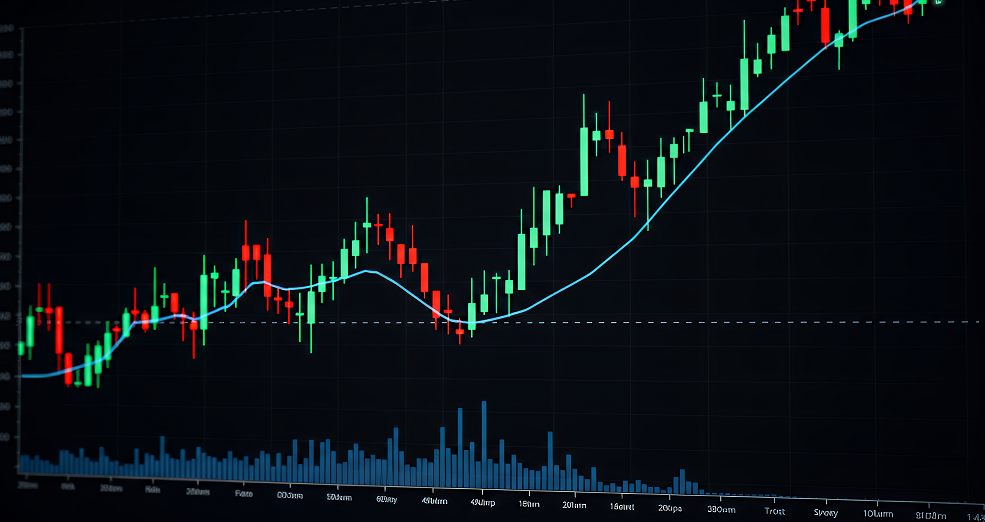IC Markets Asia Fundamental Forecast | 1 August 2025
What happened in the Asia session?
Stock indices ended the month defensively after strong tech-driven gains, as investors locked in profits and braced for tariff news and Friday’s crucial jobs report. The Fed’s cautious tone and strong economic data, especially GDP and jobs, diminished the chance of an immediate rate cut. U.S. dollar strength persisted, reflecting risk-off moves, hawkish policy, and global trade frictions.
Tariff and trade headlines remained a significant source of volatility for equities, commodities (notably copper), and FX. Commodities saw a mixed session: Oil remained steady above $70 on supply risk, while gold hovered near three-week lows with downside limited by long-term investor and central bank demand.
What does it mean for the Europe & US sessions?
Especially in Asian equities, FX, and commodities, as the U.S. reciprocal tariffs come into effect and key Chinese data drops. China’s Caixin PMI will be the main early data driver: soft results could compound negative sentiment across Asia-Pacific markets. Currency and commodity markets are likely to see sharp moves, with the yen firm and commodity prices sensitive to Chinese signals and trade headlines.
Sentiment is cautious following ADB’s regional downgrades and weak Chinese data. Portfolio positioning is defensive as traders await clarity on the next phase of global trade relations and demand trends. Friday’s Asia session will revolve around the fallout from U.S. trade deadlines, Chinese manufacturing signals, and the interplay of macro risk with policy uncertainty. Traders should watch for sudden moves and keep an eye on headline risk around tariffs and fresh economic releases.
The Dollar Index (DXY)
Key news events today
Average hourly earnings m/m (12:30 pm GMT)
Non-farm employment change (12:30 pm GMT)
Unemployment rate (12:30 pm GMT)
ISM manufacturing PMI (2:00 pm GMT)
ISM manufacturing prices (2:00 pm GMT)
Revised UoM consumer sentiment (2:00 pm GMT)
What can we expect from DXY today?
The dollar heads into August 1 with a bullish undertone supported by Fed caution, strong macro data, and a wave of new U.S. tariffs fueling risk aversion and yield-seeking. Markets retain a defensive bias as traders watch further trade and policy headlines for catalysts, with the greenback expected to remain firm unless data or policy surprises break the current momentum.
The U.S. dollar is holding firm near multi-month highs, buoyed by a strong run of economic data, robust yields, and global tariff developments. The Dollar Index (DXY) registered its first monthly gain of 2025, rising nearly 1% in July and remaining on track for further strength into early August.
Central Bank Notes:
- The Board of Governors of the Federal Reserve System voted unanimously to maintain the Federal Funds Rate in a target range of 4.25% to 4.50% at the July 29–30, 2025, meeting, keeping policy unchanged for the fifth consecutive meeting.
- The Committee reiterated its objective of achieving maximum employment and inflation at the rate of 2% over the longer run. While uncertainty around the economic outlook has diminished since earlier in the year, the Committee notes that challenges remain and continued vigilance is warranted.
- Policymakers remain highly attentive to risks on both sides of their dual mandate. The unemployment rate remains low, near 4.2%–4.5%, and labor market conditions are described as solid. However, inflation is still somewhat elevated, with the PCE price index at 2.6% and core inflation forecast at 3.1% for year-end 2025, up from earlier projections; tariff-related pressures are cited as a contributing factor.
- The Committee acknowledged that recent economic activity has expanded at a solid pace, with second-quarter annualized growth estimates near 2.4%. However, GDP growth for 2025 has been revised downward to 1.4% (from 1.7% projected in March), reflecting expectations of a slowdown in the coming quarters.
- In the revised Summary of Economic Projections, the unemployment rate is expected to average 4.5% in 2025, and headline PCE inflation is forecast at 3.0% for the year, with core PCE at 3.1%. Policymakers continue to anticipate that inflation will moderate gradually, with ongoing risks from tariffs and global conditions.
- The Committee reaffirmed its data-dependent and risk-aware approach to future policy decisions. Officials stated they are prepared to adjust the stance of monetary policy as appropriate if risks emerge that could impede progress toward the Fed’s goals.
- As previously outlined, the Committee continues the measured run-off of its securities holdings. The pace of balance sheet reduction, which slowed since April (monthly redemption cap on Treasury securities reduced from $25B to $5B, while holding agency MBS cap steady at $35B), was left unchanged this month to support orderly market functioning and financial conditions.
- The next meeting is scheduled for 16 to 17 September 2025.
Next 24 Hours Bias
Strong Bullish
Gold (XAU)
Key news events today
Average hourly earnings m/m (12:30 pm GMT)
Non-farm employment change (12:30 pm GMT)
Unemployment rate (12:30 pm GMT)
ISM manufacturing PMI (2:00 pm GMT)
ISM manufacturing prices (2:00 pm GMT)
Revised UoM consumer sentiment (2:00 pm GMT)
What can we expect from Gold today?
Gold on August 1, 2025, remains subdued, with the spot price near three-week lows amid robust U.S. economic data, a cautious Fed, and easing safe-haven demand. While tariff and policy uncertainty still offer some support, the near-term trend is mildly bearish, with fundamental demand from ETF and central bank flows likely putting a floor under deeper declines.
Renewed trade tensions ahead of the August 1 global U.S. tariff deadline led to a short-lived rebound in gold, as market participants sought safety amid policy uncertainty. However, as major trade deals (notably with Japan, South Korea, and the EU) have already been secured, risk aversion is less intense than in previous months.
Next 24 Hours Bias
Weak Bearish
The Australian Dollar (AUD)
Key news events today
No major news event
What can we expect from AUD today?
The Australian Dollar is trading near four-week lows on August 1, pressured by unexpectedly soft inflation data, rising rate cut expectations, and external headwinds from a strong U.S. dollar and weak Chinese manufacturing. The RBA’s upcoming policy meeting and global tariff moves will be critical for AUD direction in the coming days. The benign inflation print, combined with rising unemployment (4.3%) has increased market speculation that the Reserve Bank of Australia (RBA) is likely to cut rates as soon as its August 12 meeting. Market pricing now has a 95% chance of a rate cut.
Central Bank Notes:
- The RBA held its cash rate steady at 3.85% at the July meeting on 8 July 2025, following a 25bps reduction in May and in line with widespread market expectations after recent data showed inflation tracking within the target band.
- Inflation continues to ease from its peak, with higher interest rates helping to rebalance demand and supply across the Australian economy. Data for the June quarter signaled ongoing progress, though underlying pressures persist in certain sectors.
- Trimmed mean inflation for the June quarter likely remained near 2.9% and headline CPI around 2.4%, both within the RBA’s 2–3% target range. The Board noted further evidence of inflation convergence, but flagged that not all price categories are moving in tandem.
- Financial markets have shown increased volatility in the wake of global tariff and trade policy developments—especially as a result of recent U.S. and EU announcements. This has pushed asset prices higher but contributed to an uncertain outlook for domestic growth and employment.
- Private domestic demand showed a tentative recovery. Real household incomes improved and signs of easing household financial stress emerged, but some business sectors continued to face subdued demand, limiting their ability to pass on cost increases.
- Labour market conditions remained tight overall. Employment continued to expand, with low rates of underutilization. Business surveys suggest labour availability remains a constraint, though there are signs of a gradual easing compared to earlier in 2025.
- Underlying wage growth softened modestly, though unit labour cost growth remains elevated due to below-trend productivity gains. The Board remains attentive to developments in wage and productivity dynamics as cost pressures continue to evolve.
- Uncertainties persist for both domestic activity and inflation. Consumption growth has risen, but more slowly than anticipated three months ago, with global and domestic factors both contributing to the cautious outlook.
- There remains a risk that household spending picks up more slowly than forecast, which could result in ongoing subdued aggregate demand and a sharper deterioration in employment conditions.
- Given that inflation is expected to remain around the target band, the Board judged that it was appropriate to keep policy settings unchanged in July, maintaining a position that is still mildly restrictive.
- The Board continues to monitor all incoming data and assesses risks carefully, with a focus on global trends, domestic demand indicators, inflation outcomes, and the labour market outlook.
- The RBA remains committed to its mandate of price stability and full employment and stands ready to adjust policy as needed to achieve these objectives.
- The next meeting is on 11 to 12 August 2025.
Next 24 Hours Bias
Medium Bearish
The Kiwi Dollar (NZD)
Key news events today
No major news event
What can we expect from NZD today?
The New Zealand dollar remains under heavy pressure, hampered by a firmer U.S. dollar, caution around U.S. tariff deadlines, and negative signals from China. While a technical bounce is possible above $0.59, structural risks remain to the downside unless global risk appetite returns or trade policy surprises emerge in New Zealand’s favor. Key themes for NZD traders are the U.S.–New Zealand trade relationship, Chinese economic momentum, and any RBNZ policy shifts through August. The outlook for the NZD as of August 1 is cautious and vulnerable, with near-term volatility expected around trade headlines and economic data releases.
Central Bank Notes:
- The Monetary Policy Committee (MPC) agreed to hold the Official Cash Rate (OCR) at 3.25% on 9 July, marking the first pause following six consecutive rate cuts.
- The MPC cited heightened uncertainty and near-term inflation risks as reasons to wait until August for further action.
- Although the annual consumer price index inflation increased to 2.5% in the first quarter of 2025, it remained within the MPC’s target range of 1 to 3%, noting that the outlook for medium-term inflation pressures has evolved broadly in line with the May MPS projections.
- While it is expected to be near the upper end of the band in the second and third quarters of this year, easing core inflation and spare capacity in the economy should help return it toward the 2% midpoint over time.
- The MPC noted that, despite global factors, domestic financial conditions are evolving broadly as expected, as mortgage and deposit interest rates have continued to decline, reflecting a lower OCR, strong bank liquidity, and soft credit growth.
- In aggregate, GDP growth over the December and March quarters was stronger than expected, reflecting a pickup in household consumption and business investment. However, higher-frequency indicators suggest weaker-than-expected growth in April and May.
- Large economic policy shifts overseas and concerns about sovereign risk could result in additional financial market volatility and increased bond yields, while prolonged economic uncertainty might induce further precautionary behaviour by households and firms, slowing the domestic economic recovery.
- Subject to medium-term inflation pressures continuing to ease in line with the Committee’s central projections, the Committee expects to lower the OCR further, broadly consistent with the projection outlined in May.
- The next meeting is on 20 August 2025.
Next 24 Hours Bias
Medium Bearish
The Japanese Yen (JPY)
Key news events today
No major news event
What can we expect from JPY today?
The Japanese yen remains under heavy pressure, marking its worst weekly performance of 2025 and trading near multi-month lows. A firm U.S. dollar, sustained policy divergence, anticipated new U.S. tariffs and global risk jitters are all weighing on the yen. The Bank of Japan’s upgraded inflation forecast and steady policy have failed to spark a sustained recovery. Markets are now focused on Friday’s macro data from Tokyo (unemployment, inflation, PMI) and any trade or political headlines, which could trigger more volatility into the weekend. The outlook remains vulnerable for the yen unless risk-off sentiment or concrete BoJ policy signals emerge in the coming weeks.
Central Bank Notes:
- The Policy Board of the Bank of Japan decided on 31 July, by a unanimous vote, to set the following guidelines for money market operations for the inter-meeting period:
- The Bank will encourage the uncollateralized overnight call rate to remain at around 0.5%.
- The BOJ will maintain its gradual reduction of monthly outright purchases of Japanese Government Bonds (JGBs). The scheduled amount of long-term government bond purchases will, in principle, continue to decrease by about ¥400 billion each quarter from January to March 2026, and by about ¥200 billion each quarter from April to June 2026 onward, targeting a purchase level near ¥2 trillion in January to March 2027.
- Japan’s economy is experiencing a moderate recovery overall, though some sectors remain sluggish. Overseas economies are generally growing moderately, but recent trade policies in major economies have introduced pockets of weakness. Exports and industrial production in Japan are essentially flat, with any uptick largely driven by front-loaded demand ahead of U.S. tariff increases.
- On the price front, the year-on-year rate of change in consumer prices (excluding fresh food) remains in the mid-3% range. This reflects continued wage pass-through, previous import cost surges, and further increases in food prices, particularly rice. Expectations for future inflation have begun to rise moderately.
- The effects of the earlier import price and food cost increases are expected to fade during the outlook period. There may be a temporary stagnation in core inflation as overall growth momentum softens.
- Looking forward, the economy is likely to see a slower growth pace in the near term as overseas economies feel the pinch of ongoing global trade policies, putting downward pressure on Japanese corporate profits. Accommodative financial conditions are expected to buffer these headwinds somewhat. In the medium term, as global growth recovers, Japan’s growth rate is also expected to improve.
- With renewed economic expansion, intensifying labor shortages, and a steady rise in medium- to long-term expected inflation rates, core inflation is projected to gradually pick up. By the latter half of the BOJ’s projection period, inflation is forecast to move in line with the 2% price stability target.
- There are multiple risks to the outlook, with especially elevated uncertainty regarding the future path of global trade policies and overseas price trends. The BOJ will continue to closely monitor their impact on financial and foreign exchange markets, as well as on Japan’s economy and inflation.
- The next meeting is scheduled for 17 to 18 September 2025.
Next 24 Hours Bias
Weak Bearish
Oil
Key news events today
No major news event
What can we expect from Oil today?
Oil prices enter August with volatility elevated as markets digest new U.S. tariffs, OPEC+ supply increases, and mixed fundamental data. The balance between ongoing geopolitical risks, supply changes, and macroeconomic signals will dictate the direction, with the $65–$73 per barrel band remaining key for traders in the days ahead.WTI crude oil futures fell more than 1% to $69.3 per barrel on Thursday, retreating from six-week highs and ending a three-day rally, as traders assessed both geopolitical risks and US inventory data.
Investor sentiment remains cautious amid growing uncertainty over President Trump’s renewed push for a rapid resolution to the war in Ukraine. The President pleadged 100% tariffs on Russia’s trading partners within 10–12 days unless progress is made and warned China of steep tariffs if it continues to purchase oil. Adding pressure, US crude inventories unexpectedly rose by 7.7 million barrels last week due to weaker exports, sharply contrasting with expectations for a draw.
Next 24 Hours Bias
Medium Bullish





